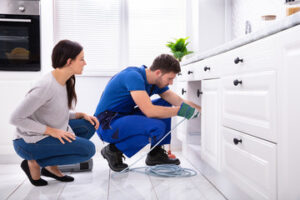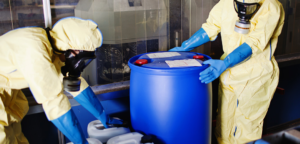Liquid Waste Removal Perth is a crucial step for preserving the environment and protecting public health. It includes septic tank waste, wastewater and industrial by-products, and other liquid substances or sludges.
Unlike dry waste, which can be thrown away in landfills without additional treatment, many liquid waste types must undergo advanced disposal techniques. These methods prevent toxic chemicals and pathogens from contaminating water sources, harming the ecosystem and human health.

Over time, sedimentation is a natural process that occurs when solid particles in a liquid settle to form layers of sand and mud. This is especially true of seas, rivers and lakes. The layering of sand and mud can also lead to the discovery of fossils. For example, if you were to look at a cliff that has been covered with layers of sand and mud over time, you would find many dinosaur bones in those layers.
In the wastewater treatment industry, sedimentation is used to remove suspended solids from water. It is a low-cost, energy-efficient process that works by gravity separation. This means that the heavier solids are allowed to fall to the bottom of the tank, while the lighter water is sent out for further treatment. During this process, flocculants are sometimes added to help the particles agglomerate together so they can be more easily separated from the water.
The simplest type of sedimentation tank is a continuous flow settling basin. These tanks are usually designed with an inlet zone, a sludge zone and an outlet zone. The rate of sedimentation in a continuous-flow tank depends on the size of the inlet and the size of the sludge zone.
Sedimentation is not a very effective way to remove colloidal and dissolved solids from water, but it can be a valuable method in conjunction with other processes such as coagulation and sediment filtration. Using these techniques, a company can remove most of the SS (suspended solids) in a wastewater sample.
Another common method of sedimentation is to use a centrifuge. This method is more efficient than a continuous-flow settling basin and produces a higher quality of sediment. However, it is not suitable for treating wastewater containing high concentrations of oils and grease.
Sediment transport is influenced by geology and geomorphology, as well as by human influence. For instance, erosion and runoff can carry sediment from a rocky surface into nearby river or lake. In addition, the amount of sediment in a body of water can be increased by the presence of organic material, such as algae, weeds and the exoskeletons of dead organisms.
Solidification
Liquid waste removal and disposal must take into account the possibility of contaminants escaping from a treatment site and reaching environmental receptors, such as waterways, groundwater aquifers and sensitive soils. To prevent this from happening, waste management professionals may choose to solidify liquid waste materials by adding binding agents that convert them into a compact and rigid, easily disposable solid. Solidification processes can use a variety of binders, including sawdust, fly ash, lime kiln dust, gypsum and phosphate. Once complete, the solidified material is transported to landfills for disposal and waste-to-energy facilities for energy generation.
Solidification is often linked with a similar waste treatment process called stabilization. Stabilization encapsulates contaminants to reduce their leachability through a process known as chemical reactions that form insoluble hydroxides, carbonates and silicates. In some cases, the same treatment reagents used for solidification can also be employed to stabilize contaminant matrices.
A key aspect of the design of a solidification/stabilization (S/S) facility is location. It should be situated near primary landfill access roads to minimize road maintenance costs, and it should be located adjacent to the landfill working face when possible to facilitate the unloading of trucks. The facility should be designed to incorporate bulking pits/tank(s), mixing/reagent storage and a truck wash-out area.
The design of a S/S facility will also need to take into consideration the potential for weather concerns, such as precipitation and wind. The reagents used in the S/S process can be impacted by rain or by wind-blown sand and mud, which can lead to short- and long-term stability problems for the S/S mix.
A common S/S process uses a heated cylinder, called an extruder, that mixes a mixture of liquid waste and a binder such as fly ash or fly sludge. The mixed mixture is then blown out of the cylinder through a mold and into a containment area to cool and solidify. The solidification process can be accelerated by using a jet of hot steam to heat the sludge. This is sometimes called thermal desorption.
Disinfection
When dealing with pathogenic liquid waste, disinfection is essential. This process deactivates pathogens by reducing their ability to reproduce, or by killing them. It can be accomplished using chemical disinfectants, heat, or ultraviolet light. For example, chemicals such as bleach and wescodyne can be used to disinfect materials that are contaminated with known or unknown microorganisms. Heat treatment uses high temperatures to kill bacteria and other microorganisms that might cause illness in humans. UV light also works well on microorganisms that are resistant to chemical disinfectants.
Disinfection is a crucial part of liquid waste disposal because it reduces the danger of infection in humans and animals. However, it is important to remember that it does not kill all organisms. Viruses and other small particles of organisms can survive disinfection, especially if they are physically embedded within larger organisms or inside clumps of fecal material. This means that it is important to perform disinfection in a fume hood or biosafety cabinet when working with toxic or pathogenic liquid wastes.
In addition to disinfecting liquid waste, it is important to properly dispose of it. This is because improperly disposed of liquid waste can contaminate water, soil, and air. This can result in environmental pollution, health risks, and economic damage.
Hazardous chemicals and untreated sewage can leach into water bodies, polluting rivers, lakes, and groundwater. These contaminants can damage aquatic ecosystems and poison people and animals. Untreated sewage can clog sewage systems and lead to expensive repairs. Acidic or reactive liquids can corrode pipes and other infrastructure.
Liquid waste from agricultural activities contains high levels of organic matter and nutrients, so it must be treated before being reused for irrigation or flushing toilets. This type of liquid waste is called greywater. It can also be recycled for non-potable purposes, such as washing clothes or cleaning floors.
In order to prevent contamination, companies should ensure that no liquid waste enters any storm drainage system, sewer system, or receiving water body. In addition, they should never pour hazardous chemicals or motor oils down the drain. They should also install grease traps to prevent fats, oils, and grease from clogging sewage systems. Finally, they should regularly train employees and contractors about proper liquid waste disposal and storage procedures.
Composting
Many forms of liquid waste can be converted into an organic material that is beneficial to soil. This process is known as composting, which involves the transformation of organic waste into a stable humus-like substance through aerobic or anaerobic decomposition. For example, sewage sludge can be processed through the aerobic decomposition process to produce compost and biogas. This enables the treatment plant to recycle its organic waste while complying with environmental regulations. In addition to preventing environmental contamination, the use of compost provides numerous benefits for the environment.
The humus-like compost created through this process adds organic matter to the soil, improving its structure and increasing its nutrient content. This helps with water retention in the soil, reducing irrigation needs and water runoff. It also enhances the soil’s ability to retain and absorb nutrients, allowing plants to utilize more of the nutrients available to them. Additionally, humus-rich compost adds carbon to the soil, which serves as a long-term carbon source for soil.
Composting also reduces the need for chemical fertilizers, which are produced using fossil fuels and contribute to greenhouse gas emissions. When compost is made locally, it also reduces the carbon footprint associated with transporting chemical fertilizers across the globe.
For the above reasons, composting has become a valuable method for managing the waste produced by communities and businesses. It allows them to recycle their waste while promoting environmental stewardship and creating jobs for the local community.
A number of businesses produce liquid wastes, including dairies and breweries. From milk to whey and trub, these liquids contain a wide variety of materials that must be safely contained. To do so, they can either set up measures to collect and contain these wastes onsite or send them out for processing by wastewater management services.
The resulting compost can be used to nourish local farms, gardens, and landscaping projects. Moreover, it promotes a sense of cooperation and collaboration in the local community. This is a good way to build a circular economy and create more sustainable communities by sharing resources instead of relying on external sources of materials.

